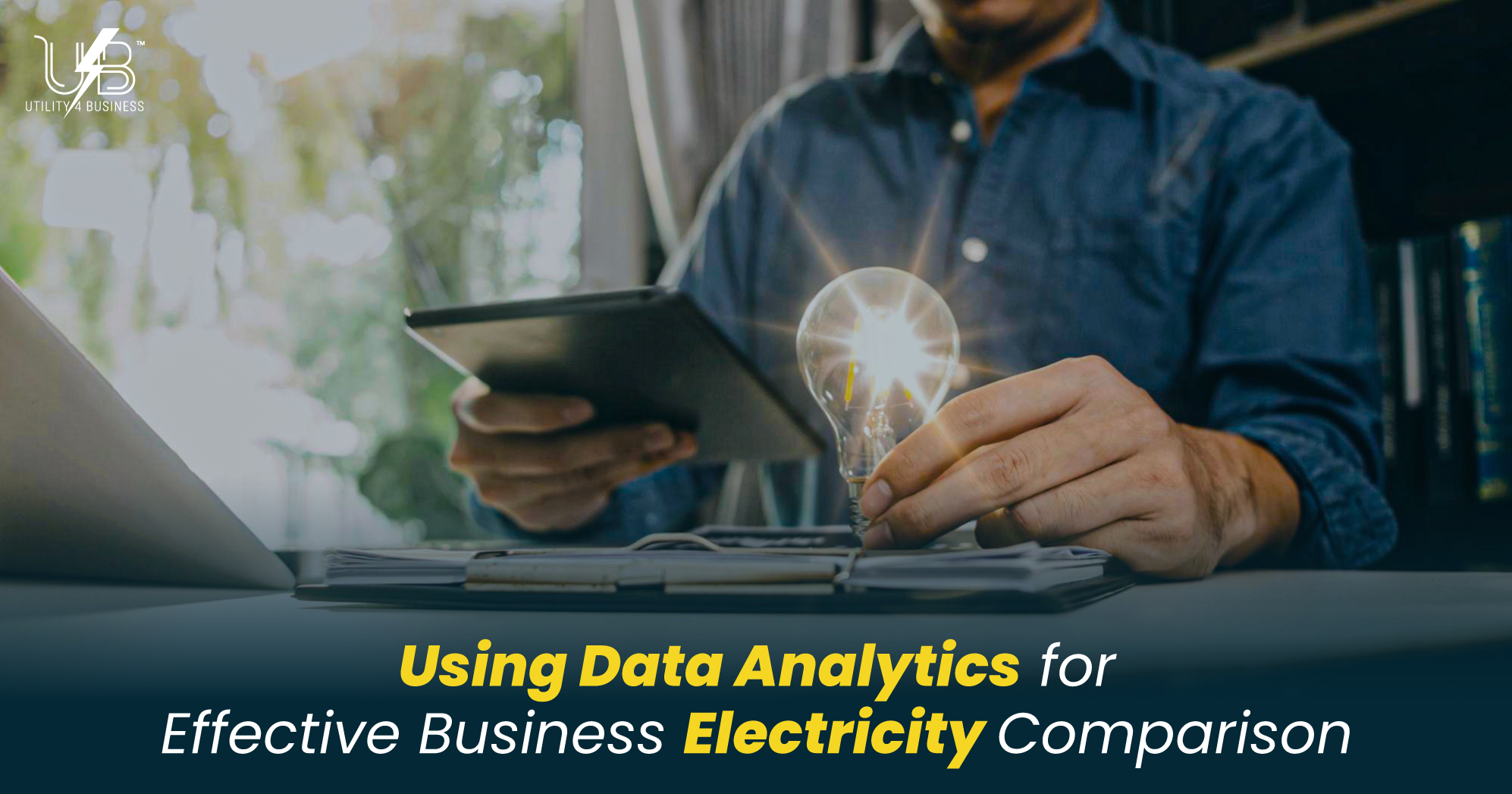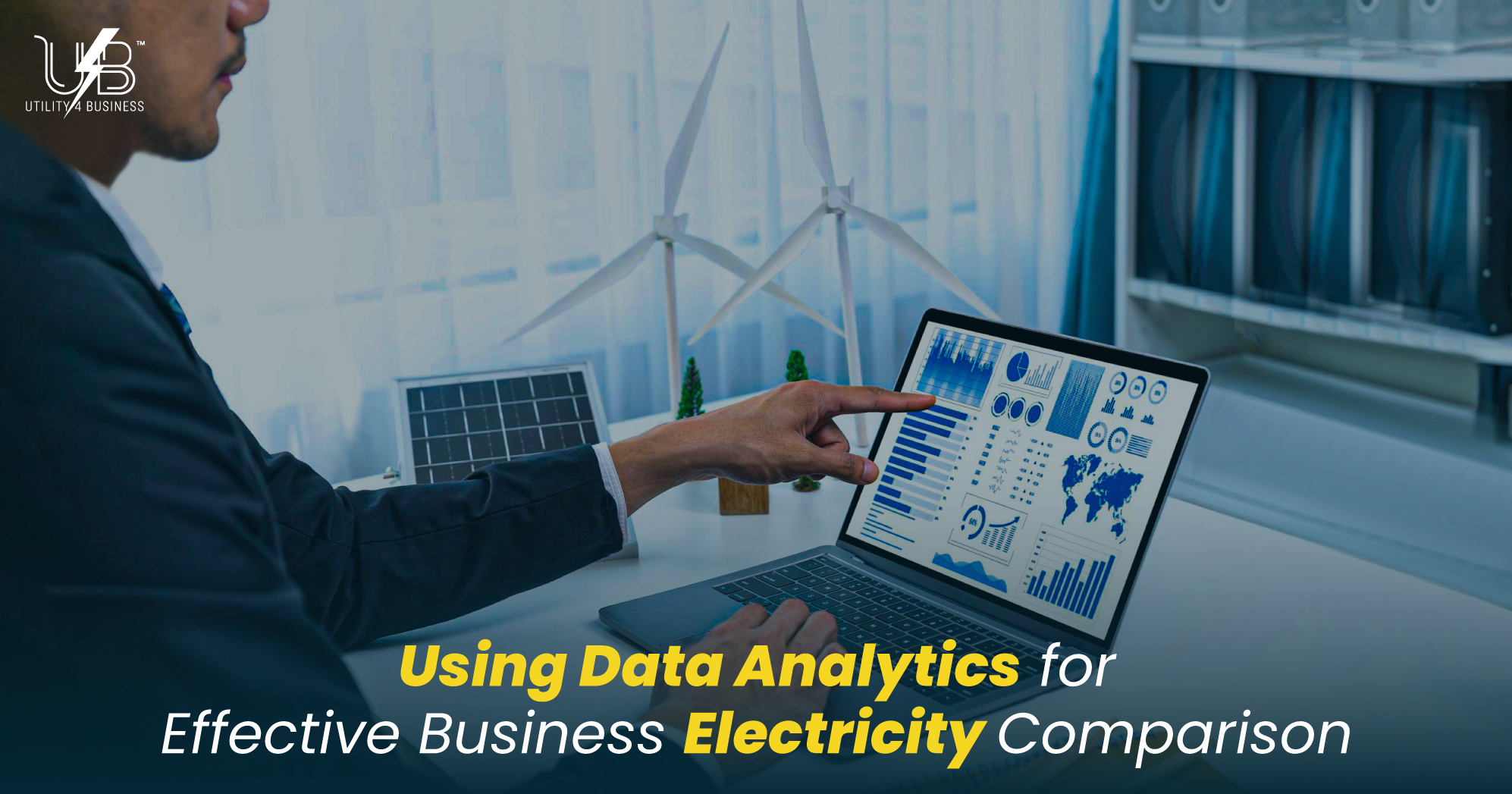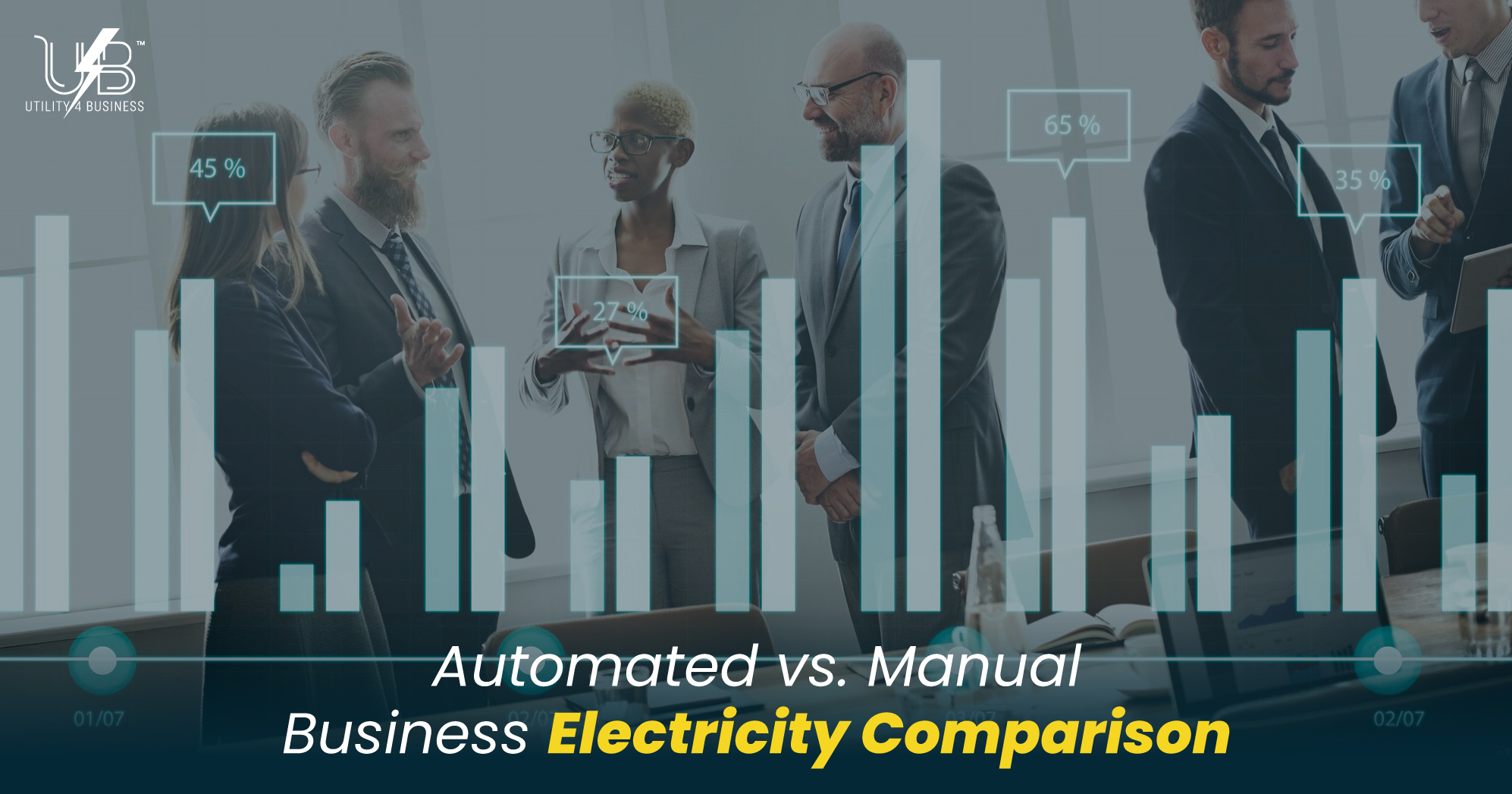Business Electricity Comparison for Different Business Sizes
Save More: Business Electricity Made Simple

Energy costs influence margins, cash flow and growth plans. Whether a café, a fast-growing warehouse or a national chain, they buy the same commodity, but they don't buy it the same way. Contract terms vary. Standing charges differ. Unit rates shift with usage and risk. A clear business electricity comparison helps each business size choose smarter. This guide explains how small, medium, and large organisations in the UK can compare business electricity confidently, avoid costly traps, and lock in value. Every example uses Utility4Business because businesses deserve a simple path from quotes to savings.
Electricity Pricing Fundamentals in the UK
A UK business electricity bill includes two core elements, a standing charge per day and a unit rate per kWh. Network, policy, and supplier costs sit inside those lines, but what matters is how those two numbers interact with usage. A low user feels the standing charge more. A high user cares most about the unit rate. Contract type also matters. Fixed contracts offer cost certainty for a set term. Variable or indexed contracts move with the market. Deemed or out-of-contract rates hurt budgets and should not continue once a contract ends. Metering influences choice as well. Smart and half-hourly meters support better data, sharper quotes, and smoother switching.
Small Businesses: Lower Usage, but More Sensitive to Standing Charges
As a generalisation, small offices, salons, cafes and independent retailers typically consume less power than larger premises. The standing charge plays a bigger role in their bills, and cash flow matters every month. Fixed contracts often suit this group, because budgets stay steady and admin remains light. A short or medium term works well when the business expects change. A longer term helps when cost stability beats flexibility.
A small business benefits from a clean business electricity comparison that shows total annual cost, not just the unit rate. Utility4Business collects usage details, scans the market, and returns quotes in a simple format. The view includes standing charges, unit rates, term length, and any fees. That makes it easy to choose the best fit for the site, not just the lowest headline number.
Medium-Sized Businesses: Demand Patterns and Data-Driven Buying
Warehouses, production units, and multi-room venues tend to sit in the middle. These sites use enough power for usage patterns to matter. Peaks, off-peak windows, and daily cycles start to influence cost. Half-hourly data, when available, brings clarity. With that data, a business electricity comparison stops being guesswork and starts being a targeted choice based on the true load shape.
Fixed terms can still work well here, especially when budgets must stay steady. Some businesses also consider part-fixed strategies across multiple sites or staggered renewal dates to reduce timing risk. Contract length becomes a strategic lever. Twelve months keep flexibility high. Twenty-four or thirty-six months can deliver stronger unit rates when the market favours longer deals. The right choice depends on appetite for risk, growth plans, and expected usage changes.
Large and Multi-Site Businesses: Volume, Risk Management, and Procurement Discipline
High-consumption sites and multi-site portfolios negotiate from a position of scale. At this level, procurement discipline drives value. Leaders define goals for cost, risk, sustainability, and operational simplicity. Negotiations can include shaped volumes, volume tolerance bands, and start dates that align with budget cycles. For some portfolios, staggered start dates smooth market timing risk. For others, aligning end dates simplifies admin and strengthens buying power.
Data becomes a central asset. Half-hourly profiles reveal peaks and load factors. That insight supports decisions on contract type, term, and even on-site measures like load shifting or backup solutions for resilience. Large portfolios may also weigh green options. Some choose certified green energy within a fixed contract. Higher usage firms tend to look to corporate PPAs or on-site generation. The right route will depend on risk appetite, sustainability objectives, and the need for flexibility across the different sizes of firms.
Explaining Cross-Size Differences in Simple Terms
Small users should focus on the total annual cost and the balance between the standing charge and the unit rate. Medium users should add usage patterns and contract timing to the decision. Large and multi-site buyers should run a formal procurement plan that includes data analysis and risk controls. In each case, timing matters. Market prices move, and renewal dates create natural entry points. A fresh business electricity comparison helps a business act at the right moment rather than slide into expensive terms.
Regional and Industry Factors Across the UK
Different regions face different distribution and policy impacts, which can shift the standing charge and unit rate. Urban sites may see different cost drivers than rural sites. Energy-intensive industries feel market swings more than light-use sectors. Opening hours also matter. A hospitality venue with long evening trade uses power when rates can vary. A daytime office carries a different profile. Utility4Business accounts for these patterns when producing a business electricity comparison UK view, so quotes match real-world usage.
How to Approach a Business Electricity Comparison Step by Step
A clear process removes stress. Start by gathering the latest bills, the MPAN numbers, the contract end date, and a view of annual usage. Confirm whether a smart or half-hourly meter is in place. Share those details with Utility4Business. The team returns quotes that set out term length, standing charge, unit rate, and the total annual cost. Read the terms in full and watch for auto-renewal clauses or exit fees. Select the contract that fits the cost and flexibility for the current phase of the business. Book the switch date to avoid any gap and keep the service continuous. After the switch, submit opening readings and keep them accurate. Run another compare business electricity check when the business grows, adds sites, or changes hours.
Common Mistakes to Avoid
Many businesses wait until the last week before renewal and then rush into a poor deal. Others focus only on the unit rate and ignore a high standing charge that erodes savings. Some accept deemed or out-of-contract rates after a move or a missed renewal and lose cash every month. Another frequent mistake is accepting a contract length that does not match the business plan, which creates early-exit pain later. These issues disappear when the business runs a structured business electricity comparison with Utility4Business and renews on time.
Sustainability and Cost Control Without the Hype
Green options now sit alongside standard contracts. Many businesses choose certified renewable electricity within a fixed deal for simplicity. Other companies add on-site measures like LED upgrades or improved controls to reduce waste. A business electricity comparison that includes green options makes these choices practical rather than complex.
Conclusion
Electricity buying does not need to feel complex. Small users should focus on the total annual cost and simple fixed terms. Medium users benefit from data, careful timing, and a contract that matches usage patterns. Large and multi-site buyers win with disciplined procurement and a clear risk plan. A structured business electricity comparison brings these steps together and turns the market into a source of savings, not stress. Utility4Business supports every stage, from the first quote to a smooth switch, and keeps future renewals on track. With the right process, energy stops draining attention and starts supporting growth.
Find This Article Helpful? Share It Now!
At Utility4Business, we offer top-notch customer support and business utility solutions for businesses across the UK. Consider sharing this article and helping others discover how our expertise can add value to their business success.

Read Our Latest Posts
Explore our latest blog posts and learn how Utility4Business can support your business growth with tailored utility solutions and services. Stay ahead of the curve with the latest information from industry experts and take advantage of our user-friendly comparison services to find the best business deals.


Get Connected
At Utility4Business, our team of experts can help you figure out the highest-value business utility deals that will help your business grow over time.


